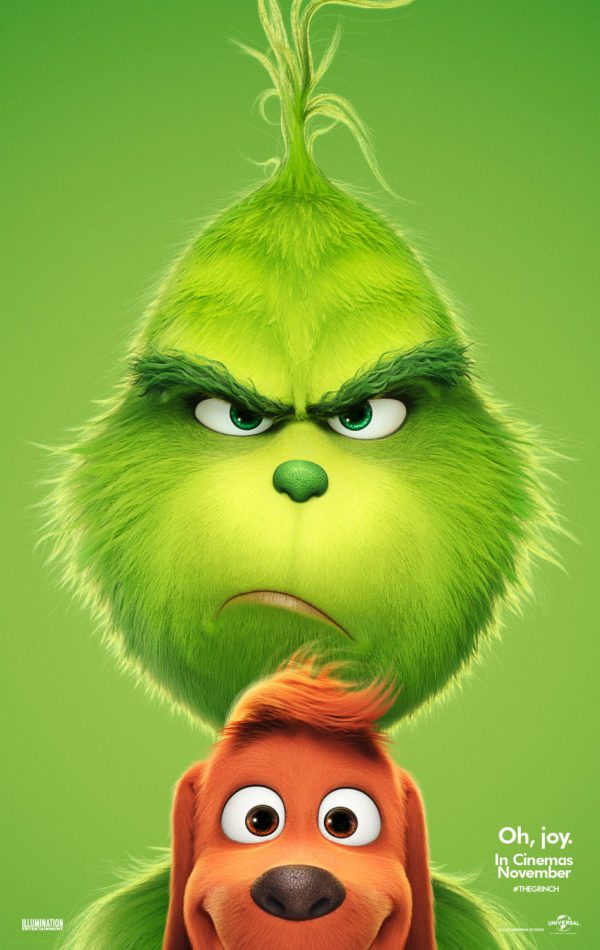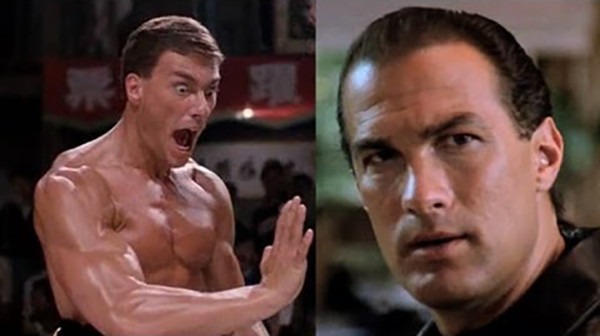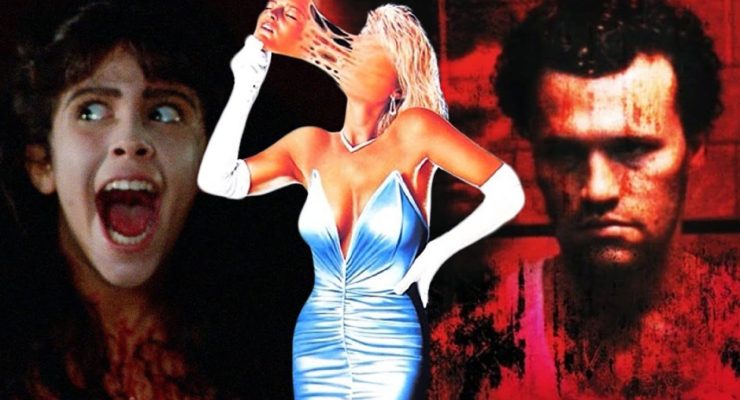Red Stewart chats with The Grinch co-director Yarrow Cheney…
Yarrow Cheney is an American animator who has been working in the film and television industries since the mid-90s. He is best known for his contributions to projects like The Maxx, Treasure Planet, and Despicable Me, as well as co-directing the Illumination movies The Secret Life of Pets and The Grinch.
Mr. Cheney, thank for taking the time to speak with me sir.
Oh, it’s a complete pleasure.
I have to ask, you’ve been working in the animation industry since the 1990s, and you’ve seen, firsthand, the transition from 2D to 3D animation. I’m wondering, to animators like yourself, in retrospect was that change something that was obviously going to happen? That the industry was going to switch to 3D?
You know, it’s interesting. I went through school, majoring in animation at the CalArts, and at that point there was a small computer department, and we started to learn little skills on the computer. But it was really just “okay, this is just another thing. We’re going to focus on traditional animation: we’re going to draw, we’re going to animate and act using our pencils on the paper.” So it’s something that, back then, we didn’t see. I thought it would be the same way throughout my entire career.
The Iron Giant was where I switched over. Toy Story had already come out- I worked on a few different films, like Cats Don’t Dance and Quest for Camelot, which were smaller but feature length films. I went on to Iron Giant, and that was…Pixar had started working on some 3D movies, DreamWorks had as well. So there was this new way of telling animated stories; I don’t think anybody thought how much it would take over the industry.
On Iron Giant, I was on the giant-creation team, and that was the time when people were trained to become the best animators possible with pencil and paper in the traditional way. But, all of a sudden, there was this great character in 3D, and nobody knew how to animate in 3D, especially at the studio at Warner Bros.- all of the animators there were traditional animators, and so they had a training program.
That was when I switched over. And that was such a unique and cool project because it was a 3D character in the middle of a traditionally-animated film, and it was a very transitional kind of movie. It wasn’t just like “okay, work on that. A 2D movie, and then the next one is a 3D movie.” It was a very nice, easy transition. And I had really loved getting my toe in and then learning how to apply the same acting techniques and just the way that you think about character to 3D from 2D, including the difficulties. One of the things that makes it easier is you’re not struggling against trying to draw the character the same way as your model; although that’s still a problem in 3D, it’s less of an issue.
Anyway, at that point, the 3D animation snowball started getting bigger and bigger. And of course, as Pixar continued making these wonderful movies, it just kept hitting one after the other. It became such a big shift in the industry, and nowadays there’s so much more. There are still, of course, traditionally-animated films happening here and there, more probably in other countries than in the States. But yeah, I don’t know if that answers your question!
No absolutely, it does. That’s interesting to hear how, even though Toy Story came out in ‘95, it was still a transitional period in the late-90s, early-2000s.
Yeah definitely. And Toy Story was such a wonderful film, and it was very clearly a film that you could have done traditionally in animation. It was so suited for animation, the way some stories are suited for animation, where you have all these toys. It wouldn’t make a lot of sense to cast humans and shoot them in costume for a film like that- it was specifically suited for animation. But it wasn’t traditional animation, it was 3D, which was the new thing and you, of course, had seen it in commercials, and here and there already. However, to do a whole film like that was such a huge thing. It was, at the time, sort of a fresh project, and it still is just such a classic movie that kind of changed everything [laughs].
Right, and that started a trend that other companies like DreamWorks and of course Illumination expanded upon to the point where it is the contemporary standard for American animation. And speaking of Illumination, one of the 3D animated films that put us in touch with each other is The Grinch, which you co-directed recently with Scott Mosier.
Now, you’ve been asked a lot of questions regarding the nature of the story, but I’m more interested in the choice of color grading. This is the most vibrant adaptation of the Grinch- the original TV special had muted secondary colors while the Jim Carrey version was outright dark. What was the reason for this more bright palette?
Yeah, that’s a great observation. It essentially comes out of the character, the Grinch, and his emotional arc through the movie- where he was going. You start with this character who hates Christmas, hates all these wonderful things: hates the Whos, hates singing, hates community. And what we wanted to show was he’s not hating bad things, he’s hating good things- he’s hating all the things that we love.
And what we were trying to do with Whoville was make this world a place that you would want to be in. The snow, the decorations during Christmas-time; we truly wanted it to be a warm place full of people who you wanted to know and be with so that, when you saw a character who didn’t want to participate in that, who would rather go up on his mountains and be alone and miserable than come down to this place that was vibrant and bursting with color and life and food and music, it would stand out. The Grinch resisted this idea that people would actually sing together.
So, it’s that kind of a cognitive dissonance that you want to sort of show where you have all of this beautiful, colorful stuff, and then you have a character in the middle of it who can’t stand it. What that does is it makes you ask “why?” Why is the character like this? Why doesn’t he like the same things that most people like? And that question is what drives the story- how is this guy gonna turn out? Is he gonna keep going deeper and deeper into his mountain into the dark, or is he going to come out and find joy and happiness and music and food and life and community?
That’s wonderful to hear how this wasn’t just an aesthetically creative choice, but a story decision in a lot of ways.
Yeah.
I love when that kind of unity is in an animated movie. Now, as much as I would love to talk with you more, we’re running low on time so I have just one last question for you sir- I noticed that you worked on a couple of episodes of Mummies Alive! That was one of my favorite cartoons as a kid: I loved all those cell-shaded shows like X-Men and Spider-Man. Do you have any fond memories of working on that series? What was it like working with cell-shaded animation back in the day?
Yeah, you know it’s funny, I worked on that project for a little while. I was friends with the director, Seth Kearsley, and I didn’t work in the studio- I always did freelance. So I was sort of doing small…I remember doing a whole bunch of drawings, like pink drawings, for locations: sort of location designing. Like they’d go “hey, in this episode we’ve got this, this, this, and this.” And in the evenings and on the weekends I’d go to my apartment and start drawing these things, and I’d send them the stuff and we’d talk about it.
So while I wasn’t working in the studio, I designed a whole bunch of Mummies Alive!. I think a lot of the sets that you remember I designed a bunch of those. I didn’t end up doing the final artwork for the backgrounds- the layout artists and background painters did all that. But the concept for a lot of that stuff I did. And it was fun. It was one of those things where, in TV, the amount of work that you had produce, the rate at which you had to produce, was so high. It was a great opportunity to kind of just jump in there and design this and this and this and just be on your desk one day and then into production the next day. It was a fun learning experience.
That’s amazing to hear. I wish you received more public credit as I wasn’t aware you had so much artistic input on the series. I truly do believe there’s a huge cult following for that show these days.
Oh really? That’s cool to know. I hope that Seth knows that too because I remember he worked hard on that show. But yeah, that’s cool. I’m glad that there are people who still like it.
For sure. And one of the things I particularly appreciated about Mummies Alive!, and the 90s in general, was you actually tried to make realistic bodily proportions with the character designs. It was the time when artists tried to be the most accurate in terms of the human physique.
Yeah, that’s true. It wasn’t as stylized, like the world and the characters, they weren’t as stylized. They were a little bit more grounded, that’s true.
It was a great time period and I’m glad that you’ve gone from doing background designs to being a full-fledged director. I genuinely believe you’re going to continue to make huge animated films in the future sir. So thank you so much again for taking the time to speak with me.
Oh thank you Red, thanks a lot!

Flickering Myth would like to thank Mr. Cheney for sitting down with us. The Grinch is out on DVD and Blu-ray.
Special thanks to Caitlin McKinley of Team Click PR for making this interview possible!
Red Stewart















